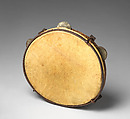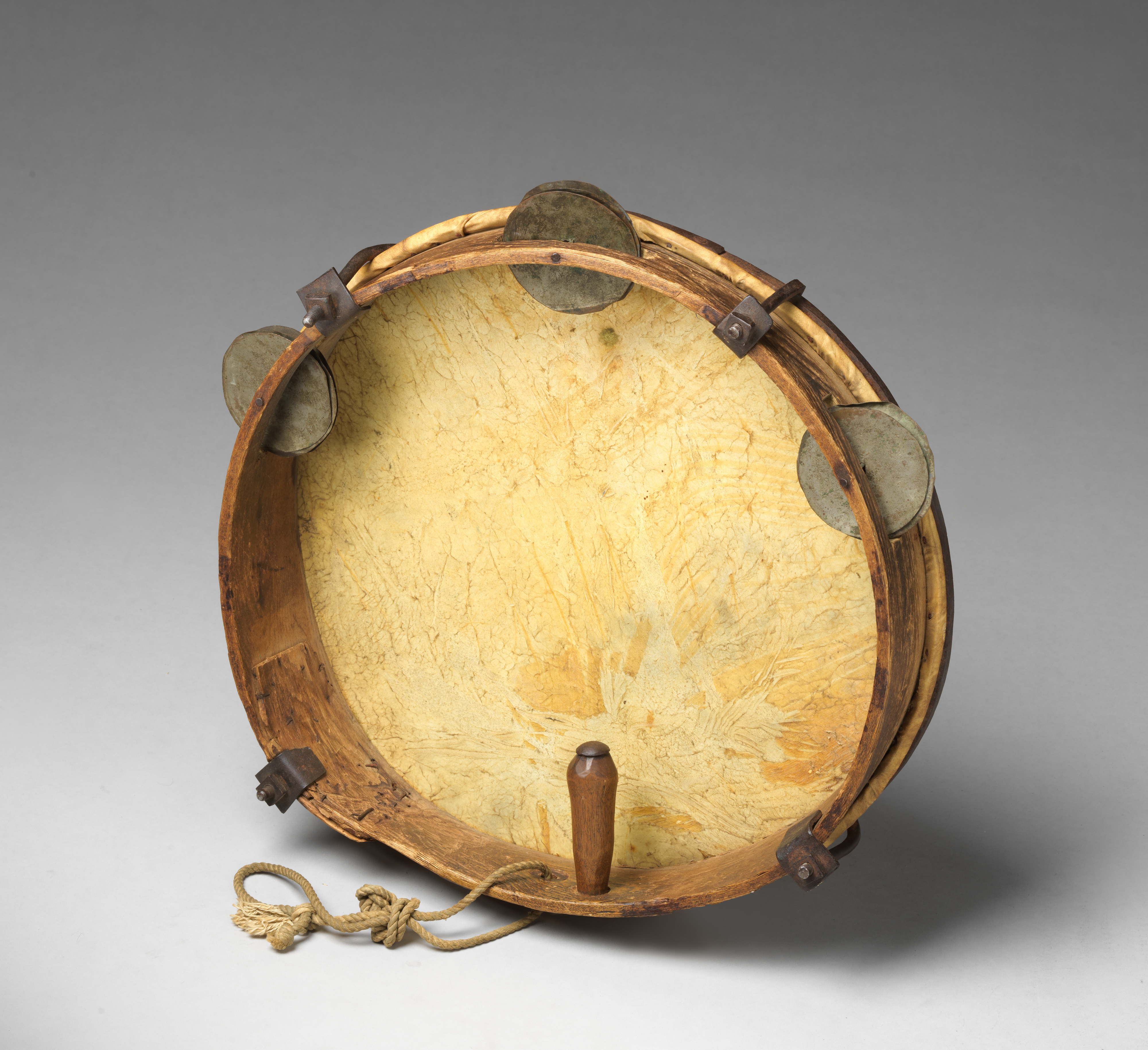Tambourine
Not on view
Enslaved Africans on plantations in the Americas were forbidden from playing drums, as authorities feared they would be used for communicating and fomenting rebellion. The enslaved communities used other small percussion instruments including bones and tambourine to provide rhythmic accompaniment for singing and dancing. The bones were later used by White musicians who appropriated instruments and music from Black communities, creating minstrel music in the middle of the nineteenth century.
This roughly hewn, homemade tambourine dates to the middle of the nineteenth century. It has three sets of three tin disks that would rattle when the skin was hit. Unusually, the maker of the tambourine included a wooden handle to hold the instrument with one hand while hitting it with the other.
This image cannot be enlarged, viewed at full screen, or downloaded.
This artwork is meant to be viewed from right to left. Scroll left to view more.



